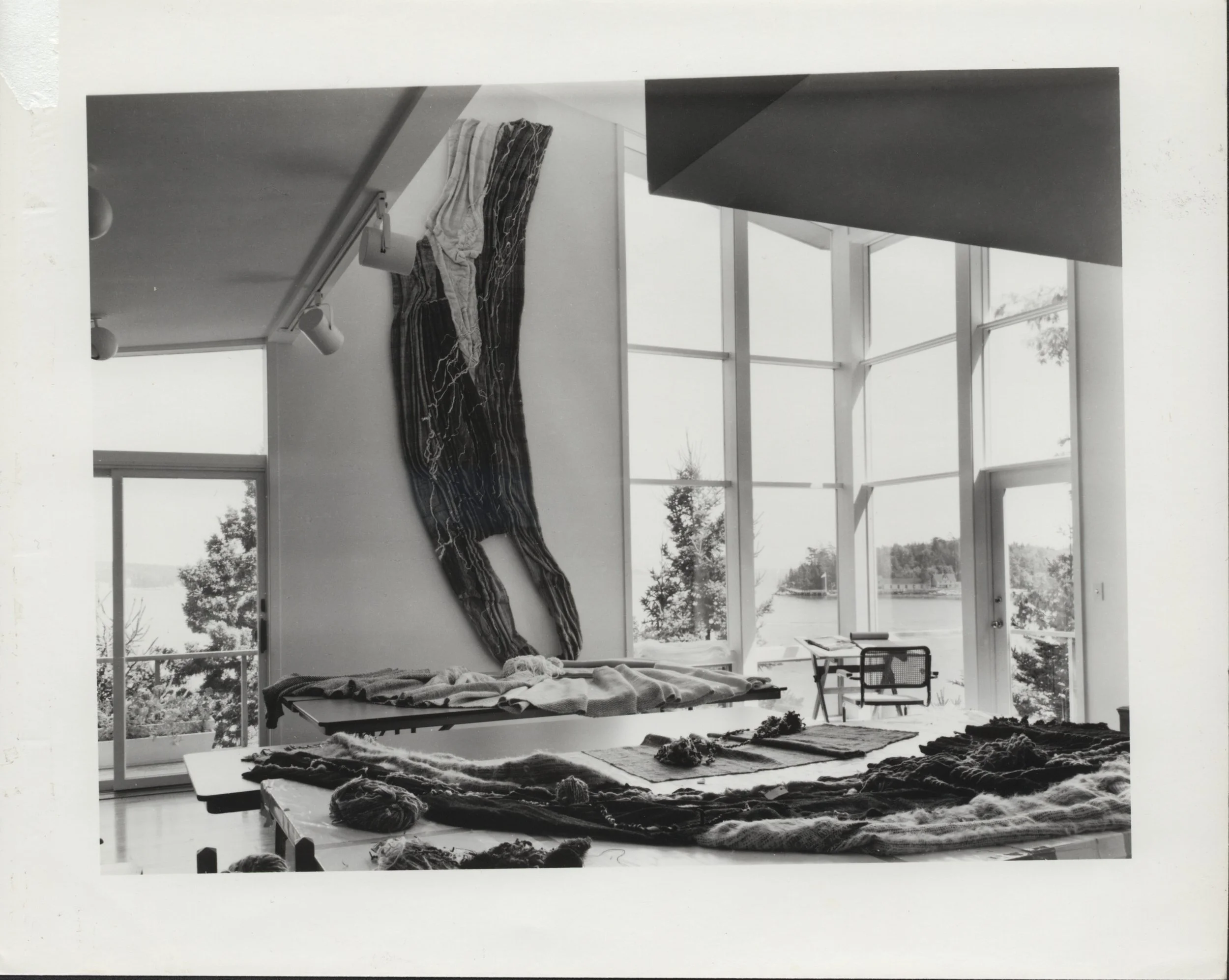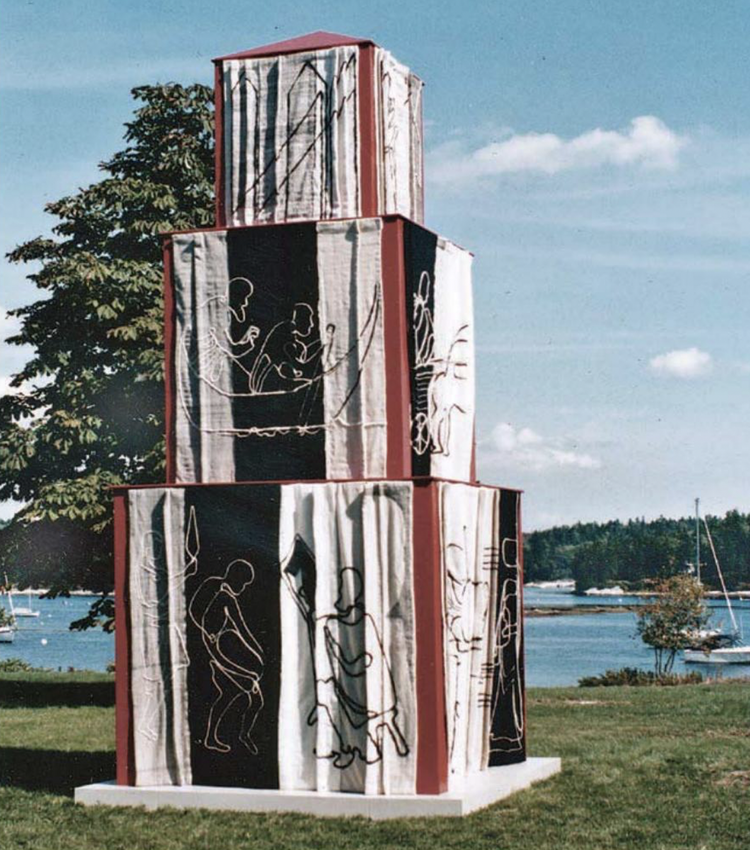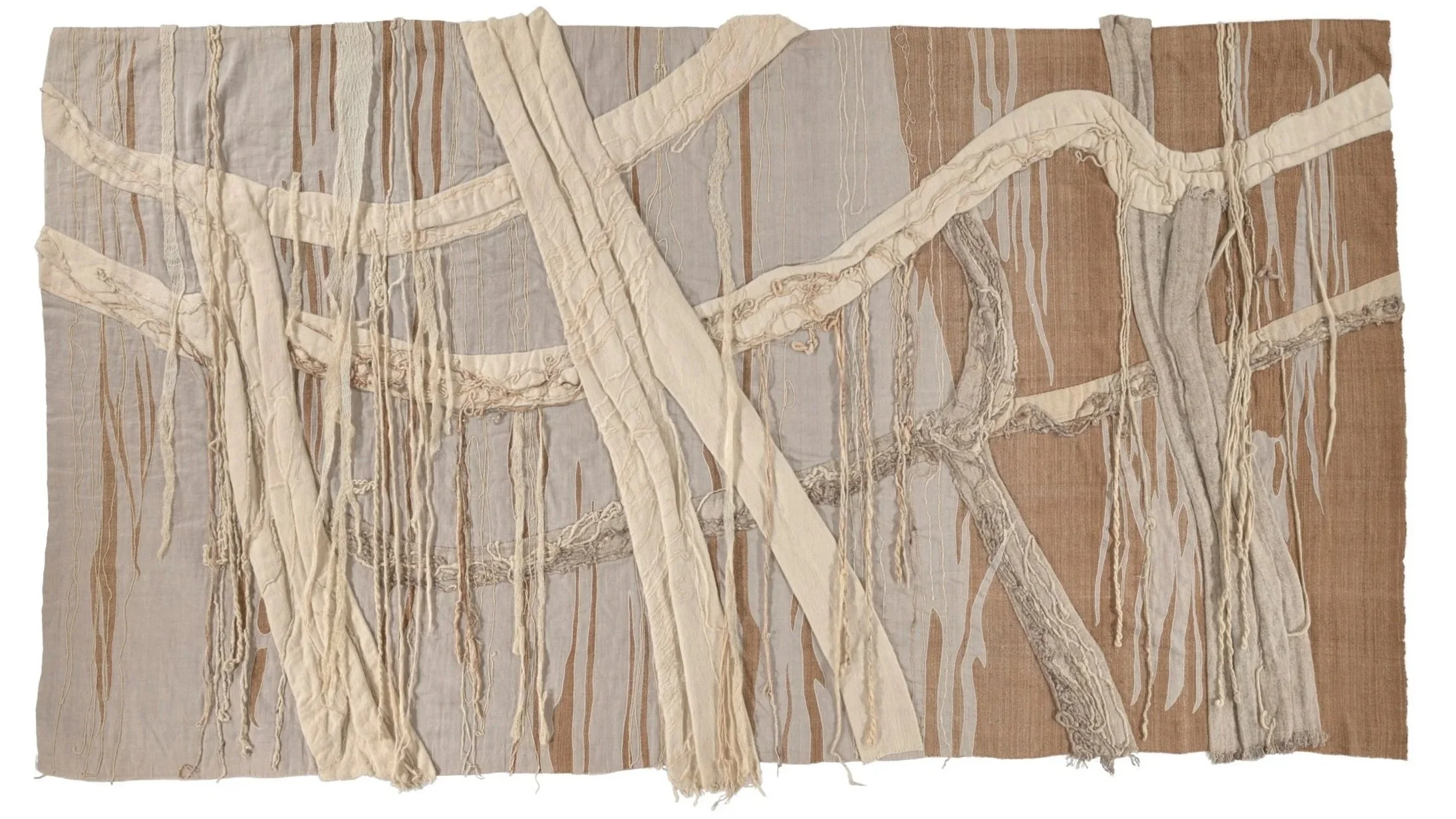











Estate of Nancy Hemenway Barton (1920–2008)
Nancy Hemenway Barton (1920–2008) was an American artist celebrated for her pioneering work in textiles and mixed media, blending traditional techniques with innovative approaches to create evocative tapestries. Born in Boothbay Harbor, Maine, she initially pursued music and literature, graduating from Wheaton College in 1941 on a music scholarship, studying composition at Harvard University, and earning a Master's degree in Spanish lyric poetry from Columbia University. Her artistic journey began with watercolors depicting landscapes and portraits, evolving into oil paintings of still lifes, portraits, and abstracts after training at the Art Students League of New York in 1957. This foundation in diverse mediums laid the groundwork for her later explorations in form, color, and cultural narratives.
Barton's signature style emerged in 1966 while living in La Paz, Bolivia, where she developed "bayetage," a unique method combining flower-dyed wool, bayeta, and collage elements to produce sculptural tapestries. Inspired by local South American Indigenous cultures and natural landscapes, her works often celebrated themes of light, space, and the rugged shores of Maine, using materials like lambswool, linen, mohair, alpaca, and karakul. She held over 20 solo exhibitions at prestigious institutions, including the Metropolitan Museum of Art, the Art Institute of Chicago, and the Edinburgh City Art Centre. Her tapestries toured museums in seven Asian countries and were featured in a 1970 U.S. Information Agency film at the Pan American Union, highlighting her global influence.
Throughout her career, Barton received numerous accolades, including residencies at the Cummington Foundation and fellowships at the American Academy in Rome and the Djerassi Foundation. She was honored as a Deborah Morton Outstanding Maine Woman by Westbrook College and awarded an honorary doctor of fine arts degree from Wheaton College. Barton also lectured extensively in Africa under U.S. Information Agency auspices and with a National Endowment for the Arts grant, while mentoring young women artists and advocating for women's rights. Her legacy endures through publications such as poetry collections, journals, and exhibition catalogues like "Aqua Lapis" and "Embroidered Wall Sculptures," with her creative process preserved by the Hemenway Foundation. A 2017 retrospective, "Ahead of Her Time," at the University of New England Gallery underscored her forward-thinking contributions to textile art.
Nancy Hemenway Barton's innovative tapestries and mixed-media works are held in the permanent collections of several prestigious institutions, reflecting her lasting impact on textile art. These include The Metropolitan Museum of Art (New York, holding "Aqua Lapis VIII"), the Art Institute of Chicago (Illinois, with pieces like "Ascent"), the Farnsworth Art Museum (Maine), the Fine Arts Museums of San Francisco (California), the Birmingham Museum of Art (Alabama, including "Confluence II"), the Portland Museum of Art (Maine), the Denver Art Museum (Colorado, featuring "Epiphyte"), the Minneapolis Institute of Art (Minnesota), and Wheaton College (Massachusetts). Additionally, Barton has a major upcoming retrospective at the Denver Art Museum.



